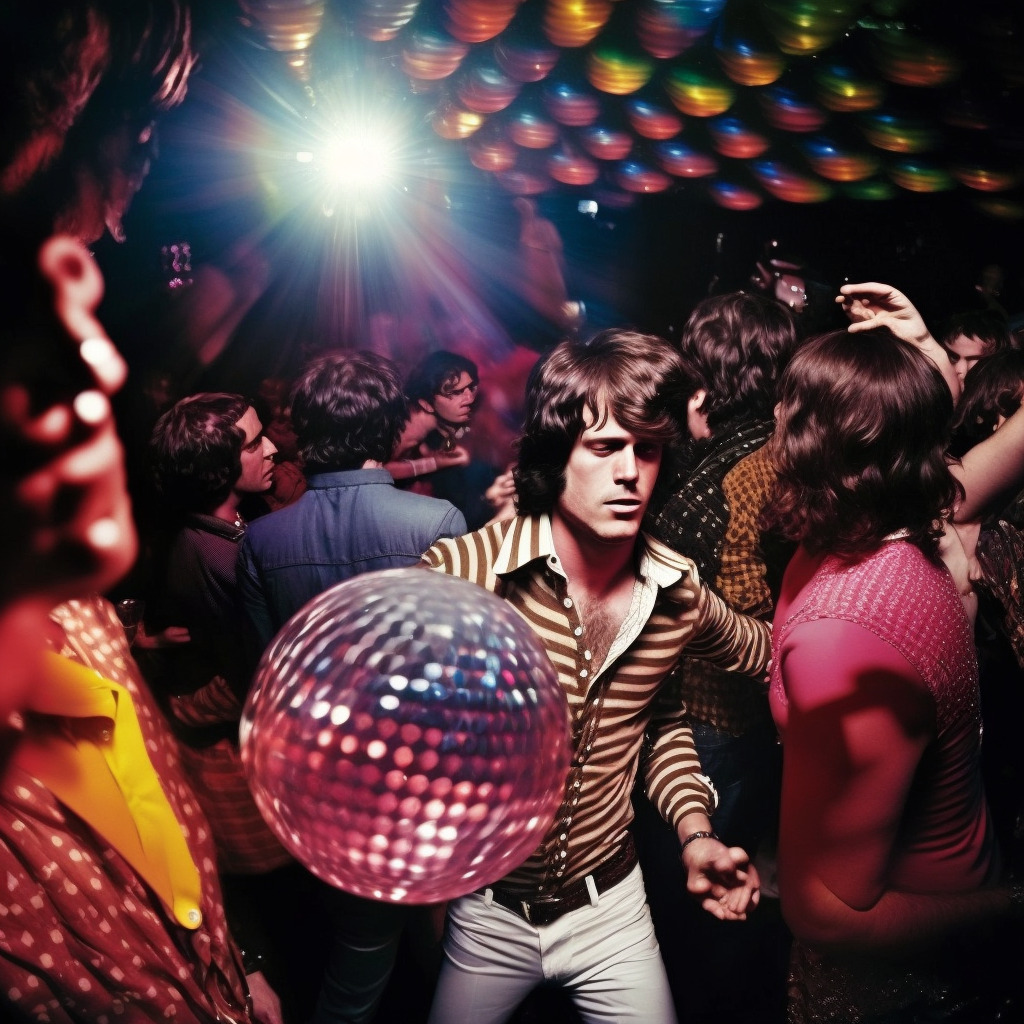The Timeless Magic of ABBA: A Closer Look at a Pop Phenomenon
ABBA’s “Mamma Mia” is a perfect example of their lasting allure, capturing the essence of the 1970s pop scene and showcasing the band’s unique talents and collaborative spirit.

ABBA, the iconic Swedish pop group, has left an indelible mark on the music world, and their song “Mamma Mia” is a testament to their enduring appeal. Formed in Stockholm in 1972, ABBA consists of four members: Agnetha Fältskog, Björn Ulvaeus, Benny Andersson, and Anni-Frid Lyngstad. These two couples, both personally and professionally intertwined, brought together their unique talents to create a sound that would captivate audiences worldwide. With “Mamma Mia,” ABBA not only captured the zeitgeist of the 1970s music scene but also secured their place in the annals of pop music history.
ABBA’s early years were marked by modest beginnings; however, their participation and victory in the 1974 Eurovision Song Contest with the song “Waterloo” brought them international success. Over the following decade, they dominated the global music charts, blending infectious melodies with heartfelt lyrics. By the time “Mamma Mia” was released as a single in 1975, ABBA had firmly established themselves as pop royalty, known for their polished performances and innovative studio techniques.
During the era when “Mamma Mia” debuted, ABBA was riding a wave of creativity and success. The mid-70s music scene was diverse, with disco, rock, and pop vying for listeners’ attention. ABBA managed to blend these elements seamlessly, creating music that appealed to a broad audience. In the studios, Björn and Benny focused on perfecting their craft, co-writing and producing the band’s tracks, while Agnetha and Anni-Frid’s harmonious vocals added their signature touch. This collaborative process was central to the creation of “Mamma Mia,” reflecting ABBA’s teamwork and musical synergy. Despite the changing musical landscape, ABBA’s magnetism endured, making them a band whose influence still reverberates in today’s music industry.
Meet the Maestro Behind ‘Mamma Mia’: Benny Andersson
Benny Andersson’s role as a composer is integral to ‘Mamma Mia.’ His vibrant blend of pop, classical, and Swedish folk influences crafted the iconic sound that delighted audiences worldwide. Andersson, alongside Björn Ulvaeus, not only shaped the band’s musical style but also brought ‘Mamma Mia’ to life with his melodic genius.

When discussing the iconic song ‘Mamma Mia,’ it is impossible to overlook the pivotal role played by Benny Andersson, one of ABBA’s esteemed composers. Born in Stockholm, Sweden, in 1946, Andersson demonstrated a penchant for music from a young age. He initially delved into music through an accordion, gifted to him by his father and grandfather. By the time he hit adolescence, trends had shifted, and Andersson found himself drawn to the Beatles and the burgeoning rock and roll scene. His early days with The Hep Stars provided a platform to hone his skills, and he soon became known for his melodic brilliance and catchy pop compositions.
Benny Andersson’s musical style is a colorful tapestry of pop sophistication, classical nuances, and traditional Swedish folk music. This blend of influences is the secret sauce that set ABBA apart in the global music landscape. Collaborating closely with Björn Ulvaeus, Andersson forged a partnership that brought a unique confluence of musical elements, enabling songs like ‘Mamma Mia’ to resonate across various musical tastes globally. The duo’s seamless synchronization and shared vision played a cornerstone role in crafting ABBA’s signature sound, thus ensuring the band’s monumental success.
The creation of ‘Mamma Mia’ saw Andersson taking the reins with his keyboard playing and harmonic decisions that infused the track with a buoyant, infectious energy. His distinctive touch is evident in the song’s catchy melodious structure, underpinned by a disarmingly simple yet intricate chord sequence. Andersson’s input was not limited to the music alone; his understanding of how melodies intertwined with lyrics to evoke emotions resulted in the song’s powerful narrative drive, making it a timeless classic. His commitment to crafting exquisite pop melodies with substantial emotional appeal was instrumental in ensuring ‘Mamma Mia’ stood the test of time.
Celebrating Timeless Impact: Awards and Accolades of ‘Mamma Mia’
Mamma Mia’ by ABBA has left an indelible mark with its awards, cultural impact, and enduring popularity, including notable covers and appearances in films and TV.

ABBA’s ‘Mamma Mia’ is not just a song but a phenomenon that transcends generations. Since its release, it has garnered numerous awards and accolades that underscore its enduring appeal and cultural significance. Released in 1975, ‘Mamma Mia’ quickly became a staple in pop music, captivating audiences worldwide with its infectious energy and catchy hooks. Over the years, the song has been recognized for its musical brilliance, influencing countless artists and receiving accolades from within the music industry.
Despite the song being a global hit, ‘Mamma Mia’ itself did not win major awards at its time of release, as is sometimes the case with pop sensations. However, it has posthumously been acknowledged for its indelible imprint on pop culture. The song’s legacy was cemented through its selection for the Rock and Roll Hall of Fame’s list of ‘The Songs That Shaped Rock and Roll,’ an honor that highlights its impact and innovation in musical storytelling.
The song’s infectious charm has prompted numerous artists to cover it, paying homage to ABBA’s incredible influence. One of the most famous covers came from the all-female group A*Teens, who topped charts in various countries with their modern pop rendition in the late 1990s. Faithful to the original spirit of ABBA, these cover versions offered a fresh take while introducing ‘Mamma Mia’ to new audiences around the world.
‘Mamma Mia’ is not just a beloved song but a pop culture icon featured prominently in various media. Its role as the titular track in the global hit musical of the same name, which later inspired two successful feature films, is perhaps the most significant testament to its lasting impact. These adaptations brought the song to millions of moviegoers and theatergoers worldwide, rekindling the magic of ABBA’s music for new audiences and cementing its place in the entertainment landscape. Additionally, ‘Mamma Mia’ has made appearances in numerous television shows and commercials, further showcasing its universal appeal and timeless resonance.
Mamma Mia’s Meteoric Rise on the Charts
Explore the chart-topping success of ABBA’s “Mamma Mia,” from its impressive rise to surpass Queen in the UK to its integral role in solidifying ABBA’s international appeal.

The song “Mamma Mia” by ABBA, released in September 1975, quickly became a monumental success and solidified the band’s global reputation. Initially, the track was launched as a part of the band’s self-titled third album, “ABBA,” and was not originally intended to be released as a single in all regions. However, after viewers repeatedly requested TV stations to replay its memorable video, released in August 1975, the band decided to release it as a single in several countries, including the UK.
“Mamma Mia” shockingly overtook Queen’s “Bohemian Rhapsody” to reach the top position in the United Kingdom, showing its impressive popularity and public demand for ABBA’s captivating sound. It held the number one spot on the UK Singles Chart for two weeks in early 1976. The song also attained significant success in multiple countries, hitting the top of the charts in Australia, Germany, and Ireland, further enhancing ABBA’s international appeal.
This hit came after ABBA’s victory at the 1974 Eurovision Song Contest with “Waterloo,” marking “Mamma Mia” as both a follow-up to that initial success and a reaffirmation of their status as pop superstars. Its success on the charts was not just a short-lived triumph but laid the foundation for ABBA’s lasting influence on music and culture in the years that followed. The commercial impact of “Mamma Mia” was substantial, boosting album sales and influencing the band’s subsequent tours, making it a pivotal track in their illustrious career.
The marketing strategies for “Mamma Mia” played a significant role in its success. The engaging and innovative music video, characterized by its colorful visuals and dynamic performance, set a high standard for music promotions of the time. Moreover, frequent television appearances helped maintain the song’s momentum, ensuring it reached a widespread audience. Critically, “Mamma Mia” was well-received, often praised for its catchy melody and infectious energy, which resonated with both the public and music critics alike.
Visual Journey Through ‘Mamma Mia’: A Look at ABBA’s Iconic Music Video
The ‘Mamma Mia’ music video is a colorful visual representation of ABBA’s energy that enhanced the song’s popularity and left a lasting impact through its engaging execution.

Mamma Mia by ABBA is not just a song; it’s an experience that transcended audio boundaries through its vibrant music video. While the release of the music video added another layer of appeal, its concept and execution were a crucial catalyst in reinforcing the band’s signature style and enhancing its global allure. The video primarily features ABBA members in dynamic and vibrant camera angles, reflecting the flamboyant and colorful 1970s fashion. Each scene is interwoven with shots that capture the animated expressions and synchronized movements of the group, which add a lively energy synonymous with the song itself.
Beyond imagery, the music video contributed significantly to the song’s popularity. Released during a time when music videos were becoming an innovative way to reach audiences, it offered fans a visual representation of the song’s catchy exuberance. The video’s cheerful aesthetic and effortlessly compelling presentation made it a staple on television broadcasts and helped ‘Mamma Mia’ attain longevity in the public consciousness. Its consistent airplay on MTV during the era ensured that the song became a household name globally.
The reception of the ‘Mamma Mia’ music video was overwhelmingly positive, as critics and fans alike praised its inventive approach and engaging visuals. The synergy between ABBA members was highlighted, illustrating their bright personalities and collective charisma. No international celebrities were involved, reflecting ABBA’s confidence in their brand and the universal appeal of their art. The prestigious responsibility of directing and production involved several talents from ABBA’s established creative team. This combined effort resulted in a piece that not only entertained but also reflected the innovative creativity at the heart of ABBA’s music.
Dissecting the Musical Framework of ‘Mamma Mia’
Mamma Mia’ by ABBA showcases expert pop songwriting with catchy melodies, dynamic harmonies, and infectious rhythms in the key of D major. Its polished production marks a high point in ABBA’s musical evolution.

ABBA’s ‘Mamma Mia’ is a masterclass in pop song construction, seamlessly blending catchy melodies with dynamic harmonies and infectious rhythms. The song is predominantly in the key of D major and adheres to a well-crafted structure that incorporates the use of major and minor chords to create a sense of tension and release, which is a hallmark of ABBA’s songwriting prowess. The chord progression primarily revolves around D, G, A, and Bm, creating a pleasant harmonic foundation that underscores the vibrant melody.
The tempo of ‘Mamma Mia’ sits comfortably at around 137 beats per minute, giving it an upbeat, danceable feel that has made it a perennial favorite on the dance floor. The song’s rhythm is driven by a straightforward rock beat, provided by the drums, which is complemented by crisp guitar strums and a prominent bassline that adds depth to the track.
The melody of ‘Mamma Mia’ is quintessentially ABBA, with layered harmonies that add a rich, full-bodied sound to the vocal lines. The harmony is meticulously arranged, allowing each vocal part to shine while contributing to the overall texture of the song. Instruments such as the piano and synthesizer contribute to the song’s distinctive sound, creating a lush, orchestral backdrop that is both grandeur and inviting. Notably, the use of electric piano and the iconic marimba riff add distinctive elements that have become synonymous with the band’s sound.
In the context of ABBA’s discography, ‘Mamma Mia’ represents a significant point in their artistic journey. Compared to their earlier tracks, the polished production and intricate arrangement of ‘Mamma Mia’ showcase the band’s evolution toward sophisticated pop compositions with a broad appeal. This track, like many from the same era, demonstrates a shift toward more complex production techniques and layered soundscapes, marking a departure from the simpler arrangements of earlier works.
An interesting fact about the recording of ‘Mamma Mia’ is that it took place at the famous Metronome Studios in Stockholm, with Benny Andersson and Björn Ulvaeus serving as producers. The creative energy in the studio, coupled with the innovative use of technology, played a crucial role in crafting this iconic hit.
Exploring the Emotional Resonance and Storytelling in ABBA’s ‘Mamma Mia’
Delve into the lyrics of ABBA’s ‘Mamma Mia,’ exploring themes of heartbreak and longing, and the song’s engaging narrative and literary craftsmanship.
So I made up my mind, it must come to an end
Look at me now, will I ever learn
I don’t know how, but I suddenly lose control
There’s a fire within my soul
(Just one look) and I can hear a bell ring
(One more look) and I forget everything, whoa
Mamma mia, here I go again
My, my, how can I resist you?
Mamma mia, does it show again
My, my, just how much I’ve missed you?
Yes, I’ve been brokenhearted
Blue since the day we parted
Why, why did I ever let you go?
…
******* This Lyrics is NOT for Commercial use *******

The song ‘Mamma Mia’ by ABBA is a captivating blend of emotional turmoil and irresistible charm, encapsulated within its catchy melody and poignant lyrics. At its core, the song deals with themes of betrayal, longing, and a persistent pull towards a loved one. These themes resonate strongly with audiences, as they reflect universal experiences of heartache and the inner conflict between desire and reason. The lyrics convey a palpable sense of a relationship’s roller-coaster ride, marked by moments of doubt and yearning.
Narratively, ‘Mamma Mia’ unfolds through a first-person perspective, enabling listeners to experience the protagonist’s emotional journey firsthand. This perspective is crucial as it builds an immediate connection with the audience, allowing them to empathize with the singer’s struggle and vulnerability. The lyrics craft a vivid story of heartbreak and indecision, painted with the strokes of intimate introspection. This narrative style not only enhances the song’s impact but also underscores its relatability, drawing listeners into a shared experience of love’s complexities.
Beyond the narrative, the song employs a rich tapestry of literary devices. The use of rhetorical questions and metaphorical language adds depth to the emotional expression. For instance, phrases like “there’s a fire within my soul” metaphorically illuminate the intensity of feelings that words alone might struggle to capture. This layered use of language not only enriches the lyrics but also heightens their emotional resonance, allowing the song to transcend its time and connect with audiences from various generations.
Additionally, compared to other works by ABBA, ‘Mamma Mia’ stands out for its intricate play between cheerful music and melancholic lyrics. This duality reflects a hallmark of ABBA’s songwriting style, where joyous pop tunes are interwoven with deeper emotional content. The lyrical craftsmanship in ‘Mamma Mia’ exemplifies this fusion, offering both an infectious energy and a profound narrative that speaks to a global audience.
🎶 Did you know? ABBA’s Mamma Mia dethroned Queen’s Bohemian Rhapsody(!) on UK charts in ’76! Talk about a pop power move! 💥 #MammaMia #ABBA #PopLegends https://bit.ly/4h0ojcJ
Click to Tweet







